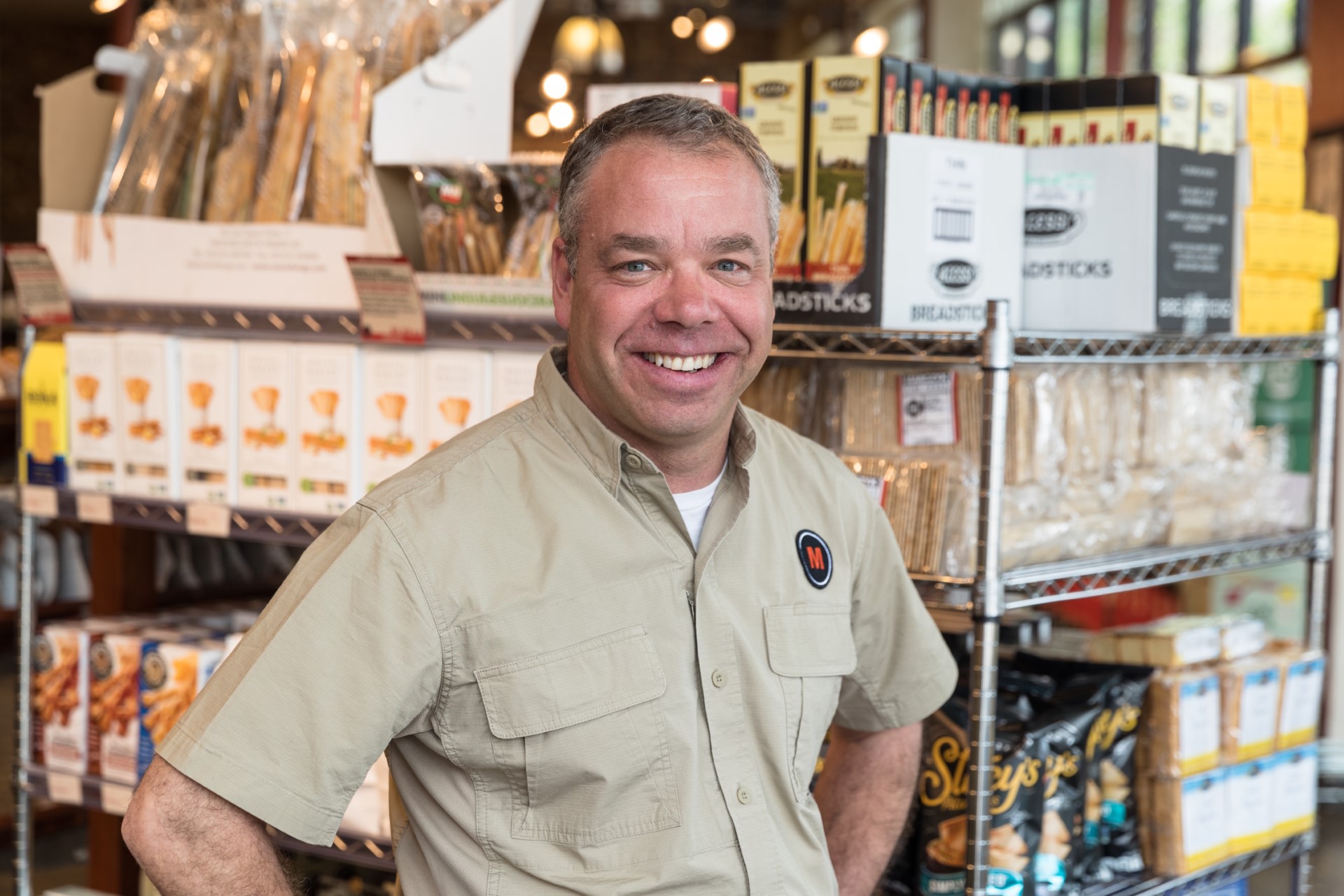Pete Marczyk, co-founder of Marczyk Fine Foods in Denver, takes a cautious approach to incorporate new products into the mix at his family’s two neighborhood grocery/specialty store locations.
The two Marczyk Fine Foods stores, which each measure about 8,000 square feet, seek to provide a blend of both high-quality everyday essentials and unique items from overseas and from other areas of the country that his customers might not typically find in Denver.
“We like to say that we don’t have everything; we just have everything you need,” said Marczyk.
He will discuss his strategies for product discovery and procurement at a session called “How I Buy” at the Winter Fancy Food Show on Monday, Jan. 22 at 11 a.m. on the Big Idea Stage. He recently spoke with SFA News Daily about how he seeks to optimize his product mix.
How do you approach your product assortment at Marczyk’s Fine Foods?
We have so many items that are unique to us, or uniquely sourced. We have items that you might recognize, but you might not recognize the brand, or items that you only saw in the Northeast, or you only saw in Italy, or wherever.
Our approach to constructing and curating our product mix is that, if you know the specialty food business, I want you to wonder, “Where did they get this?” or “How did they get this at such a good price?” If you don’t know the business, like most of our customers, I want you to feel like, “Wow, this place is great, I haven’t seen that since I was a kid,” or “That’s really cool that they went out of their way to bring this British item.” We want them to see that this is a world-class neighborhood market.
One adage that drives us on the buy side is, “You make your money when you buy.” We are pretty careful about how we populate the store. We are slow to say “yes” [to new product introductions].
We look for items that have the right look and feel, and the right level of quality. We also look to see if there is a need, or if we can create a need for that product. We also look at the packaging. Does it look good on the shelf?
We do employ a perpetual inventory system that allows us to order through the data, rather than walking around the store with a pad or even a [scanner] gun. We do all of our ordering through the back office. By managing our inventory at a pretty high level — for our size and scale — it has allowed us to remain viable, competitive, and profitable.
How do you generally discover new items?
We really rely on our customers to bring us ideas, and also some key distributors. A lot of the items we buy are unique to us, and if we go through traditional distribution, so does my competitor across the street.
Sometimes we try to find a small vendor or a small producer, or alternative distribution. We built a relationship with GFI [Gourmet Foods International] about 15 years ago. We try to forge relationships with some out-of-market people and put together a pallet or two, and bring them in as an LTO [limited time offer] until we can do it more regularly. It happens organically and over time.
I would not say there is one way we find things. I might be shopping in a store in Boston, find something I really like, and go hunt it down.
We also brought on KeHE just recently, and we are working with them. We work closely with vendors, and find ways to participate in programs that may be designed for bigger stores, and find ways to make it work for small stores like ours.
How do you shop at the Fancy Food Show?
For the Winter Show, for example, there are a few categories we are looking at. I start with distributors or suppliers I already work with. It’s really about relationships: How do you leverage the relationships you already have with these distributors and suppliers? It’s always easier to do a little more with the people you are already doing business with, rather than finding a whole new bunch of people. We tend to rely on trusted relationships, and we see what they have.
Then, it is a question of walking the floor and trying to make new friends. If you see something cool, you stop and try to learn about it. I don’t stop at every booth by any means. I am looking for “unique.” I am looking for “eye-catching.” I am looking for something that maybe is “buzzy,” but not “faddy.”
We look through the publications and see what trends are coming, or what trends are in place, but we are a very traditional neighborhood market. Our customers like to see new things, but it’s not like the product mix changes dramatically every two weeks. We trickle things in and trickle things out over the course of the year, and see what works.
Related: Keeping Up With the Farm Bill; Texas Joe V's Smart Shop Opens

